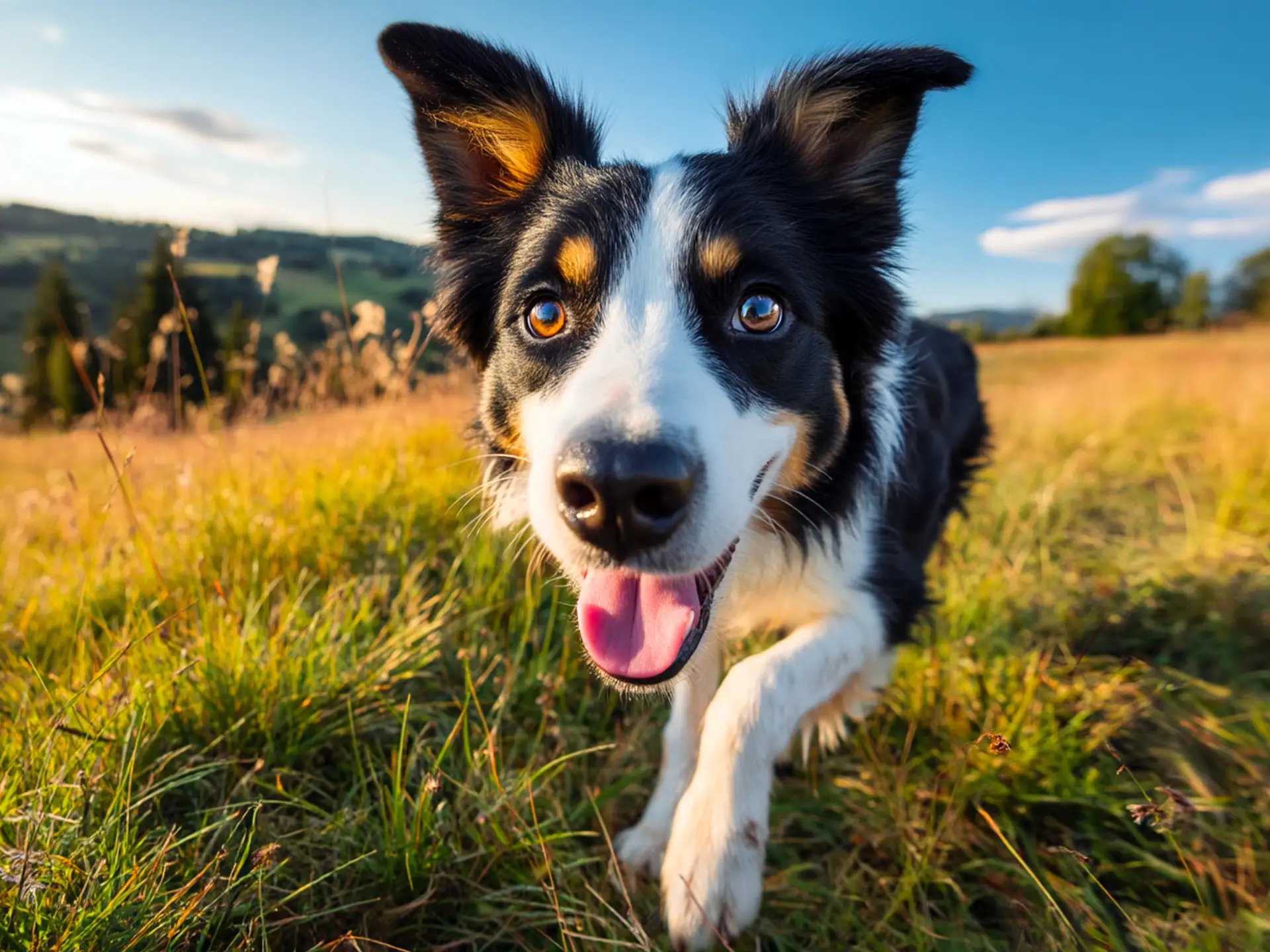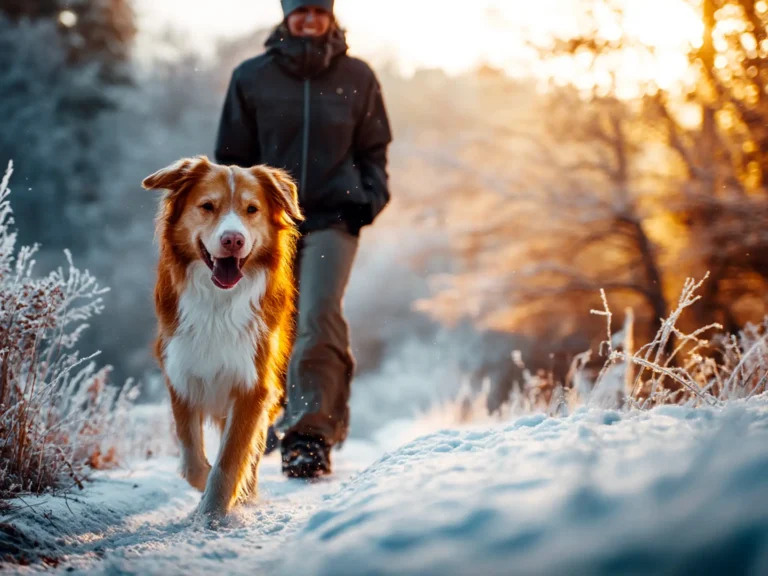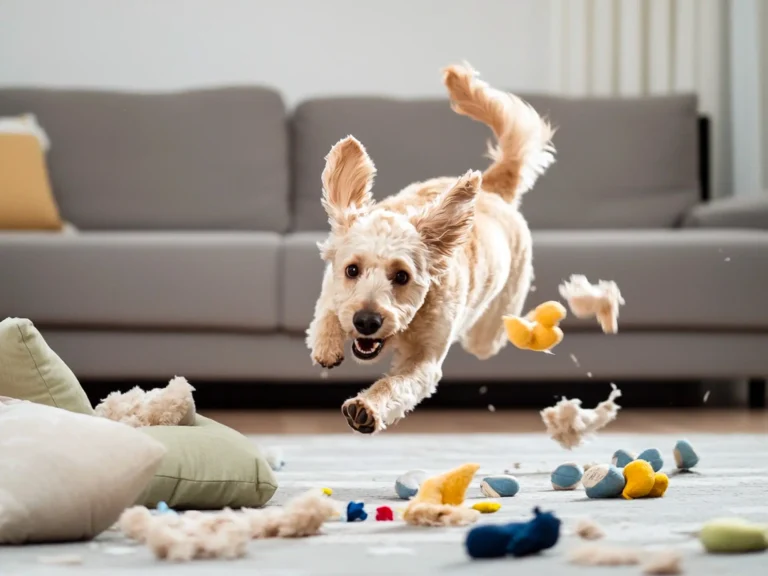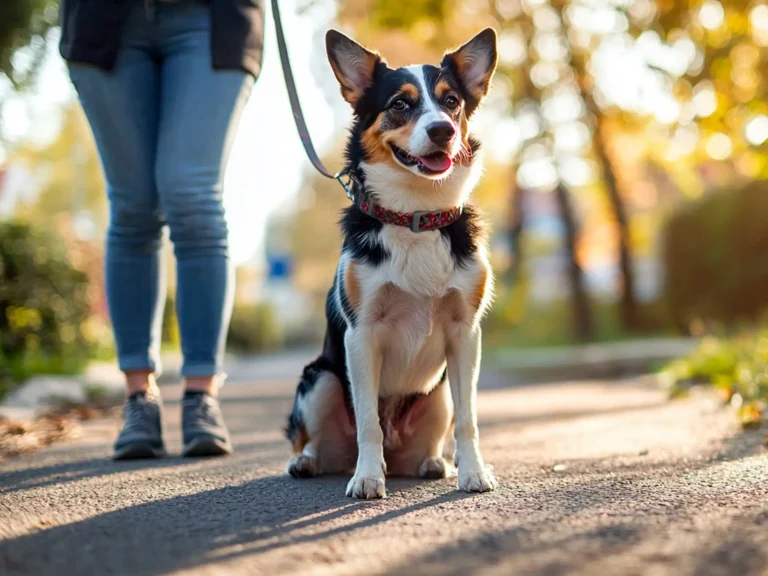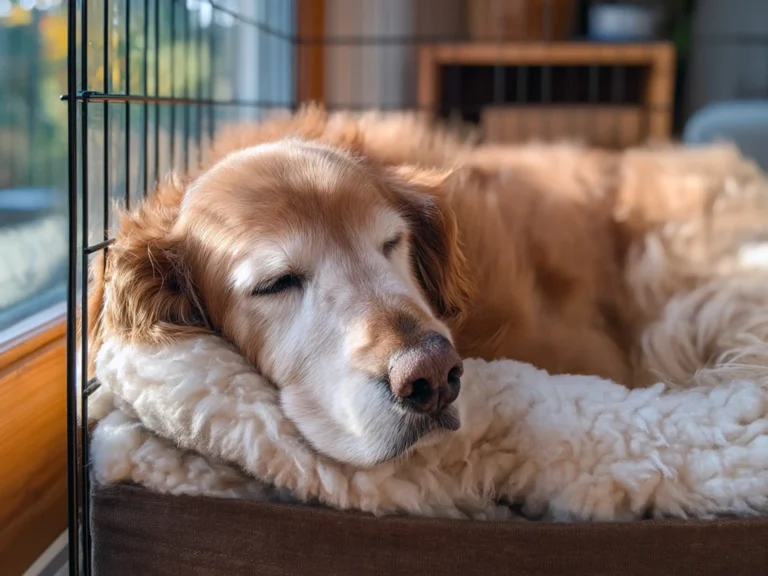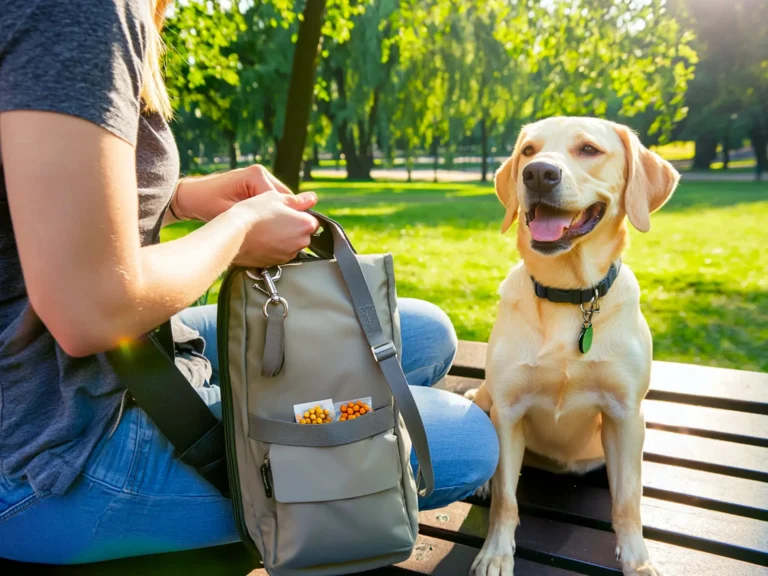Why Confidence in Dogs Matters
Confidence is one of the most important traits a dog can have, yet it’s often overlooked. A confident dog is curious, adaptable, and able to navigate the world without melting into fear or shutting down at every new sound or stranger. For owners, a confident dog is easier to train, less reactive, and more enjoyable to bring along on adventures because they feel safe in new environments.
- Why Confidence in Dogs Matters
- Signs of a Confident Dog vs. Signs of Insecurity
- Why Some Dogs Lack Confidence
- Can a Shy or Insecure Dog Become Confident?
- How to Build a Dog's Confidence: Step-by-Step Approach
- 7-Day Quick-Start Confidence Training Plan for Dogs
- Confidence-Building Exercises for Dogs
- Building Confidence at Home, on Walks, and with Strangers
- Building Confidence in Puppies
- FAQs About Building Confidence in Dogs
- Pitfalls to Avoid When Building a Dog's Confidence
- Final Thoughts on Building Confidence in Dogs
But what if your dog isn’t confident? Maybe you adopted a shy rescue, have a puppy who startles easily, or notice your dog hides behind you when visitors come over. The good news is that confidence is not fixed. With the right training, a little patience, and the right approach, you can teach your dog to see the world as a safe, exciting place instead of a scary one.
This guide will walk you through exactly how to build confidence in a dog using proven methods, confidence-building exercises, and real-life strategies to help your dog thrive at home, on walks, and with strangers.
Signs of a Confident Dog vs. Signs of Insecurity
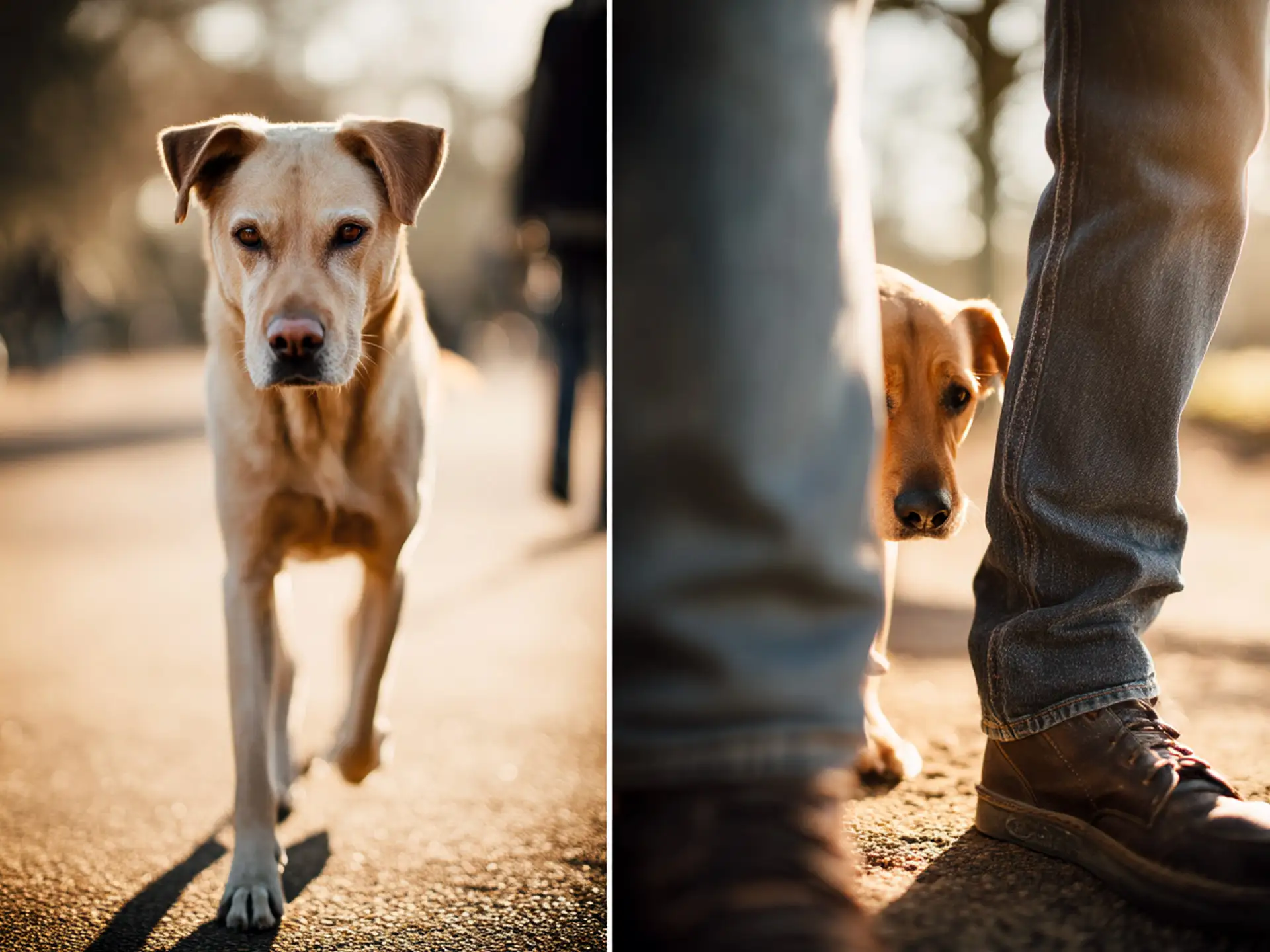
Understanding whether your dog is confident or struggling with insecurity is the first step toward helping them. A dog’s body language and behavior reveal a lot about how they feel in different situations. When you learn to read these signals, you can tell whether your dog is relaxed and curious or tense and anxious.
Signs of a Confident Dog
A confident dog moves through the world with a sense of ease. You might notice:
- Relaxed posture: The body appears loose rather than stiff.
- Tail carried naturally: Neither tucked tightly nor raised rigidly like a flag.
- Curiosity: Willingness to approach new people, places, and objects at their own pace.
- Soft eye contact: Comfortable but not staring aggressively.
- Quick recovery: Bounces back easily after a sudden noise or surprise.
- Balanced energy: Playful and alert without being frantic or overly cautious.
These traits suggest a dog who feels safe, secure, and able to handle new experiences without shutting down or overreacting.
Signs Your Dog Lacks Confidence
An insecure or shy dog often shows the opposite behaviors. Look for clues such as:
- Cowering or hiding: Seeking shelter behind you or under furniture.
- Tucked tail and lowered ears: A classic sign of nervousness or fear.
- Avoidance: Refusing to approach people, objects, or unfamiliar areas.
- Excessive lip licking or yawning: Stress signals that show discomfort.
- Freezing or shaking: A dog who feels too overwhelmed to move forward.
- Fear-based barking or growling: Sometimes mistaken for aggression but often rooted in insecurity.
Recognizing these signals helps you gauge your dog’s confidence level so you can choose the right training strategies. A dog who lacks confidence isn’t being stubborn or difficult—they are simply telling you they feel unsafe or unsure.
Why Some Dogs Lack Confidence
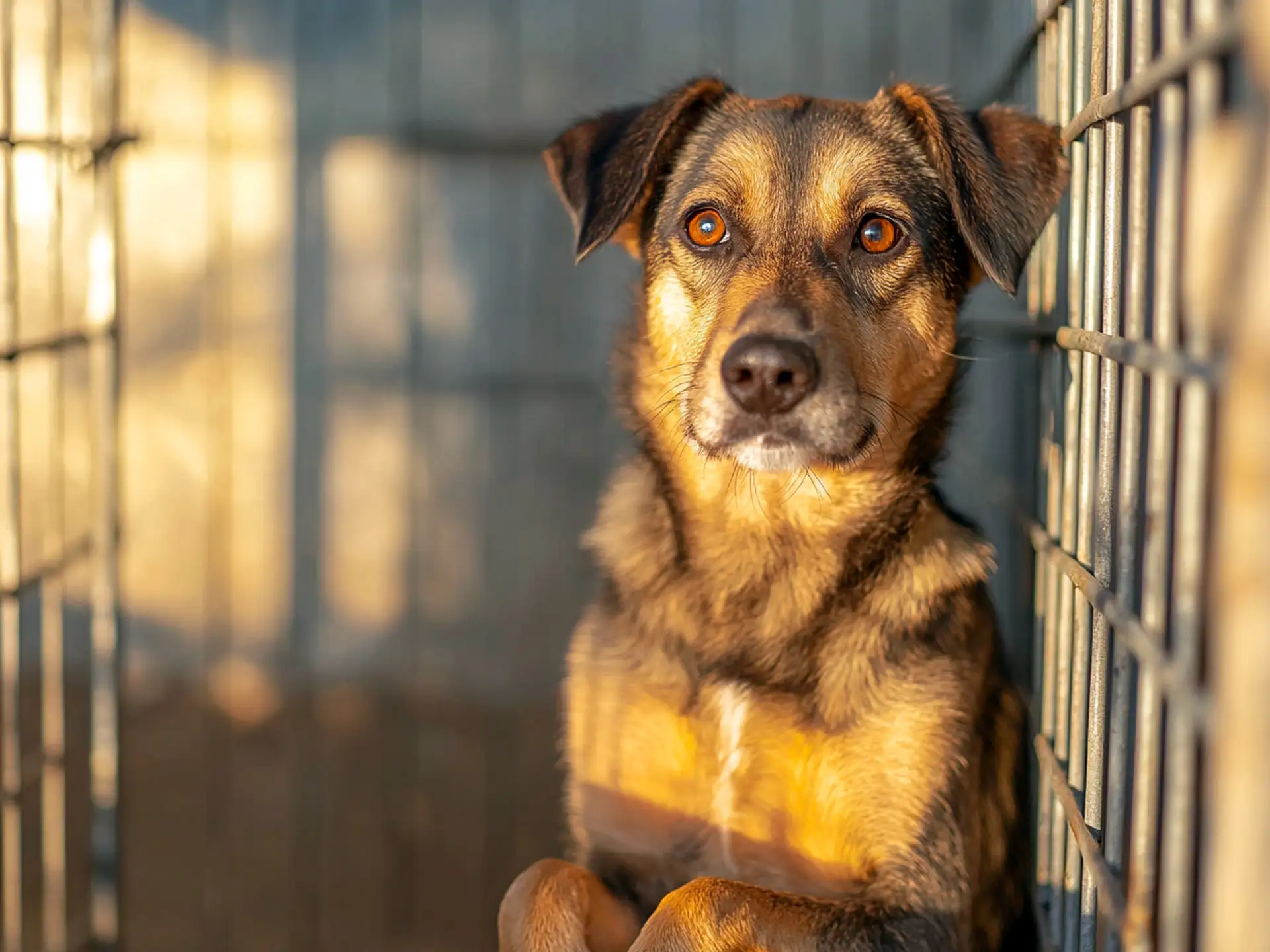
Confidence in dogs doesn’t develop by accident. It comes from a mix of genetics, life experiences, and the environment in which they grow up. When a dog seems fearful, hesitant, or overly cautious, it usually traces back to one or more of the following factors:
1. Lack of Early Socialization
Puppies have a critical window between three and fourteen weeks when they form opinions about the world. Dogs who miss positive exposure to people, sounds, surfaces, and environments during this period often become nervous or suspicious of anything new later in life.
2. Negative or Traumatic Experiences
Rescue dogs or dogs from unstable backgrounds may carry emotional baggage. A single bad experience, such as being attacked by another dog or startled by loud noises, can leave lasting fear if not addressed properly.
3. Inconsistent or Harsh Training
Dogs thrive on predictability and kindness. Rough handling, unpredictable corrections, or unclear rules can erode trust and make a dog anxious about trying new things.
4. Genetic Predisposition
Some dogs are naturally more cautious or sensitive than others. Breeds developed for guarding or working independently may be more alert and reserved by nature, while some individuals simply have shy personalities regardless of breed.
5. Sudden Changes in Environment
Moving homes, changes in household members, or the addition of new pets can unsettle even well-adjusted dogs. If not managed carefully, these changes can shake their sense of security.
Understanding why your dog struggles with confidence is the first step toward helping them. The next step is learning whether a shy or insecure dog can truly become confident—and how to make it happen.
Can a Shy or Insecure Dog Become Confident?
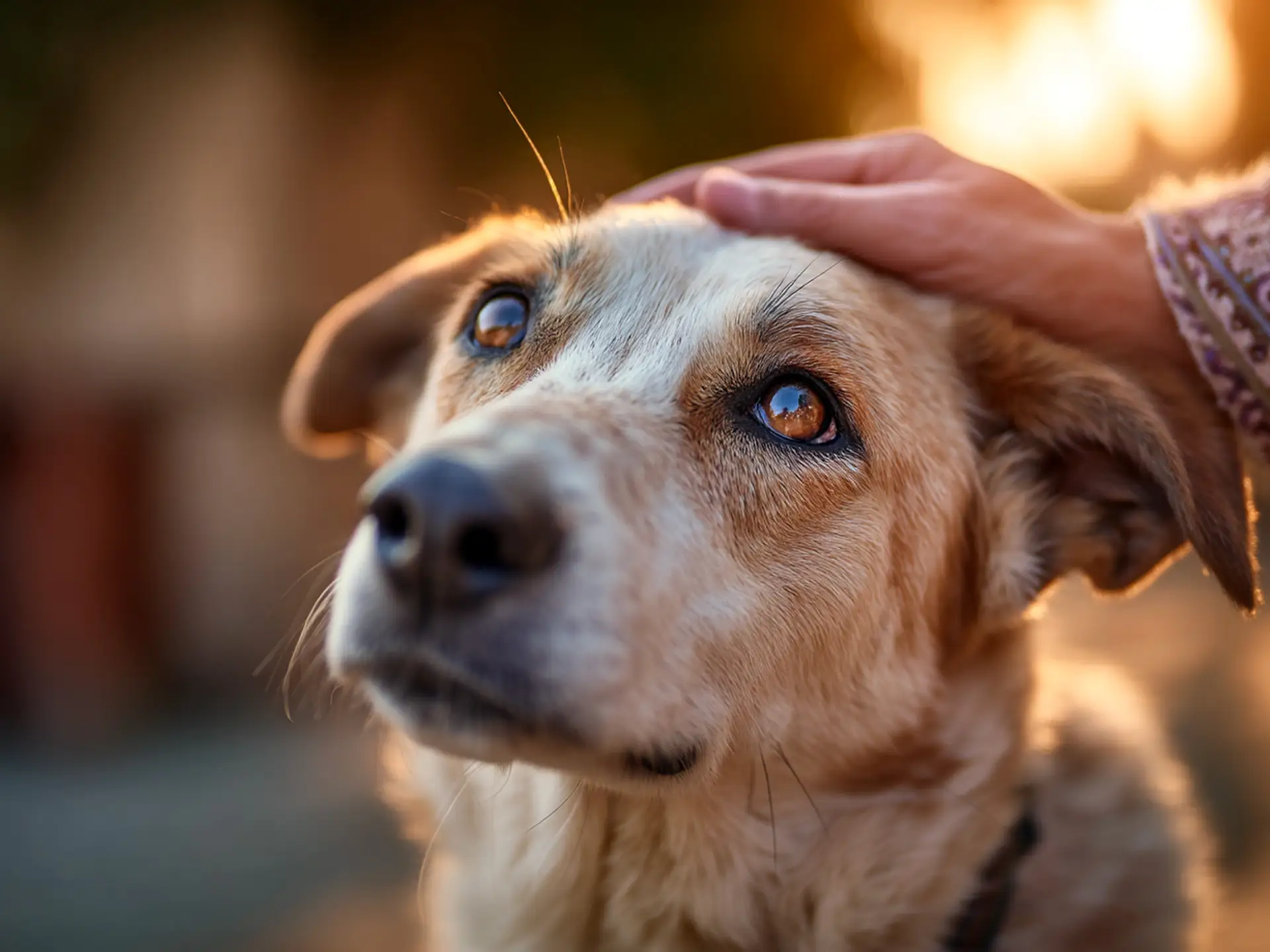
The short answer is yes. Most dogs, even those who seem nervous or fearful, can learn to become more confident over time. Confidence isn’t something a dog either has or doesn’t have forever. It’s a skill that grows when dogs have positive experiences, learn to trust their environment, and feel supported by their owners.
The process does take patience. A shy dog won’t suddenly transform after one or two training sessions. Instead, confidence builds in layers. Every time your dog successfully explores something new or handles a situation without fear, they gain a little more trust in themselves and in you. Over weeks and months, these small wins add up until things that once felt scary become manageable, and eventually, normal.
It’s also important to understand that confidence looks different for every dog. Some will go from hiding behind you to happily greeting strangers. Others may always be more reserved but will stop trembling at loud noises or freezing in unfamiliar places. The goal isn’t to turn your dog into a social butterfly but to help them feel secure, capable, and less anxious in everyday life.
With the right approach, even the shyest dogs can learn to face the world with curiosity instead of fear. The next step is understanding how to actually make that happen.
How to Build a Dog’s Confidence: Step-by-Step Approach
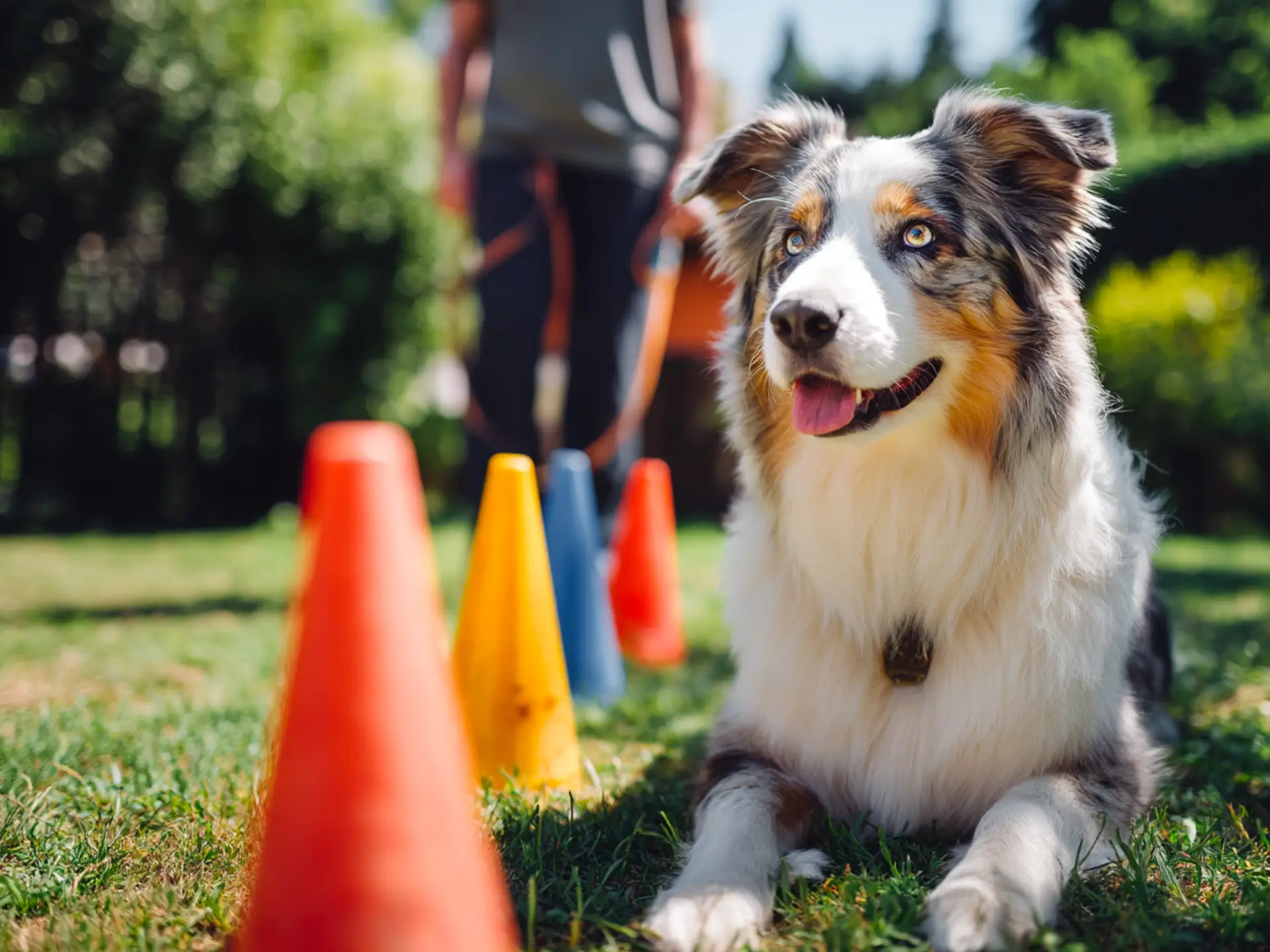
Building confidence in a dog takes time, consistency, and the right balance between comfort and challenge. The goal is to create a series of small successes so your dog learns that the world is safe and manageable. Below is a proven step-by-step approach you can use with dogs of any age.
Step 1: Build Trust and Security
Confidence begins with trust. Your dog needs to feel safe before they can take risks. Start by creating a predictable daily routine for meals, walks, training, and rest. Stay calm and consistent in your interactions so your dog learns you are a reliable presence.
Give them a safe retreat like a crate or quiet room where they can relax without being disturbed. Avoid overwhelming situations during this stage — no big crowds or loud environments yet. Your dog should first learn that home and life with you feel stable and positive.
Step 2: Teach Basic Obedience Skills
Simple commands like sit, stay, come, and place give your dog a sense of control. When they understand and can perform these cues reliably, it boosts their confidence because they know how to succeed in familiar tasks.
Practice these commands in quiet areas first, then slowly introduce mild distractions like a park bench or a calm visitor. Keep sessions short and upbeat, always ending on a win so your dog leaves feeling successful.
Step 3: Use Desensitization and Counter-Conditioning
Many insecure dogs fear specific triggers — strangers, other dogs, loud noises, or unfamiliar objects. The key is to introduce these triggers slowly at a distance or intensity your dog can handle.
For example, if your dog is afraid of strangers, start by letting them watch someone from far away while you reward calm behavior with treats or play. Over time, as they stay relaxed, gradually reduce the distance. This combination of gentle exposure and positive reinforcement helps replace fear with curiosity and comfort.
Step 4: Create Small, Achievable Challenges
Confidence grows when dogs overcome manageable obstacles. Set up situations where success is easy at first: stepping onto a new surface, walking past a parked bicycle, or staying calm when a friend enters the room.
As your dog masters these small challenges, slowly increase the difficulty. The key is to keep progress at a pace where your dog stays comfortable but learns to stretch their limits just enough to grow.
Step 5: Add Confidence-Building Exercises
Structured exercises are one of the fastest ways to build confidence. Activities like nose work, puzzle toys, and simple agility games encourage problem-solving and exploration. For example, hiding treats around the house turns curiosity into a rewarding game, while walking across a low balance beam teaches body awareness and courage.
We’ll cover a full list of confidence-building exercises in the next section so you can try them at home right away.
Step 6: Socialize Safely and Slowly
Socialization is about quality, not quantity. Instead of rushing your dog into busy parks or overwhelming gatherings, start with calm, predictable interactions. Let your dog observe from a distance before gradually moving closer.
Reward relaxed behavior around new people, environments, and other dogs. Over time, these controlled experiences help your dog learn that the world isn’t scary — it’s full of opportunities for fun and rewards.
Step 7: Practice at Home, on Walks, and with Strangers
Confidence should carry over into daily life. Practice training games in different rooms at home, then during walks in quiet neighborhoods, and later in slightly busier areas.
Introduce friendly strangers gradually, always letting your dog approach at their own pace. Combine familiar commands with these new experiences so your dog feels anchored by what they already know while facing something new.
Step 8: Celebrate Every Success
Confidence grows through repetition and positive associations. End every session on a win, whether it’s a successful sit-stay in a new park or calmly watching a stranger walk by.
Celebrate progress with praise, treats, or play. These emotional rewards help your dog connect courage with good things, making them eager to try again next time.
7-Day Quick-Start Confidence Training Plan for Dogs
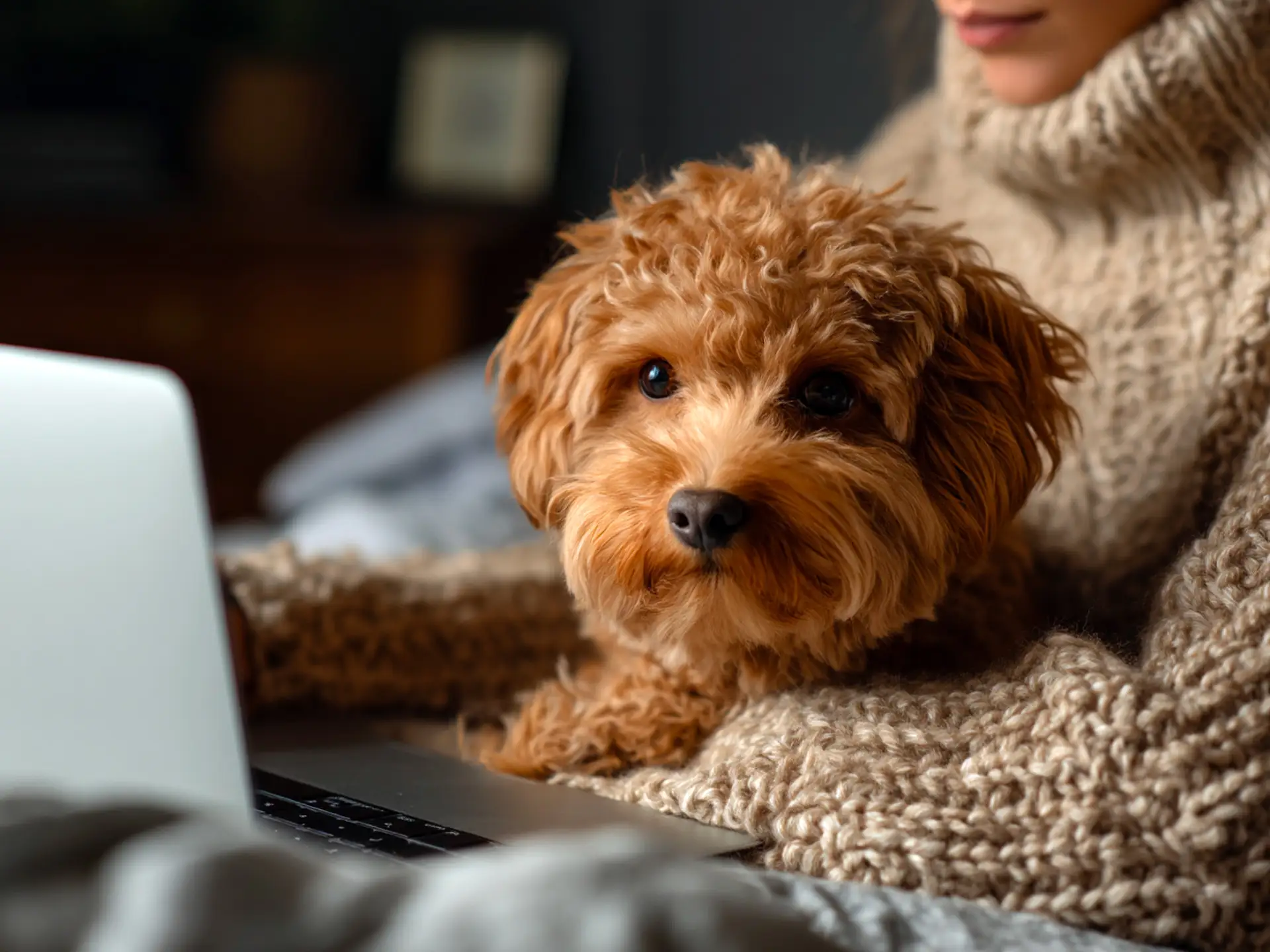
If you want to start building your dog’s confidence right away, this simple 7-day plan gives you a clear, practical roadmap. It builds on the steps covered above, turning them into small, achievable goals so your dog gains trust and courage at their own pace.
| Day | Focus Area | Activity | Goal for the Day |
| Day 1 | Safety & Trust | Create a safe retreat space at home, use calm routines. | Dog feels secure with predictable feeding, walks, and rest. |
| Day 2 | Basic Commands | Practice sit, stay, and come in a quiet room with treats. | Dog performs commands reliably in a calm setting. |
| Day 3 | Novelty at Home | Introduce a new surface or object (towel, low box) with rewards. | Dog explores new things voluntarily with curiosity. |
| Day 4 | Mild Social Exposure | Observe a stranger from a distance while rewarding calmness. | Dog stays relaxed watching people or mild distractions. |
| Day 5 | Confidence Exercises | Try nose work or a simple obstacle course. | Dog engages with problem-solving activities happily. |
| Day 6 | Walks in Low-Stress Areas | Short, quiet walk with opportunities for sniffing & exploring. | Dog investigates surroundings without signs of anxiety. |
| Day 7 | Mixed Practice & Celebration | Repeat best exercises, end with favorite treat or play session. | Dog ends the week with positive associations & success. |
How to Use This Plan
- Keep sessions short: 5–10 minutes for shy dogs, longer if they enjoy it.
- Progress at their pace: Stay on a day longer if needed before moving forward.
- Celebrate small wins: Every relaxed interaction builds trust and confidence.
- Repeat weekly: Add new people, places, or challenges as your dog improves.
Confidence-Building Exercises for Dogs
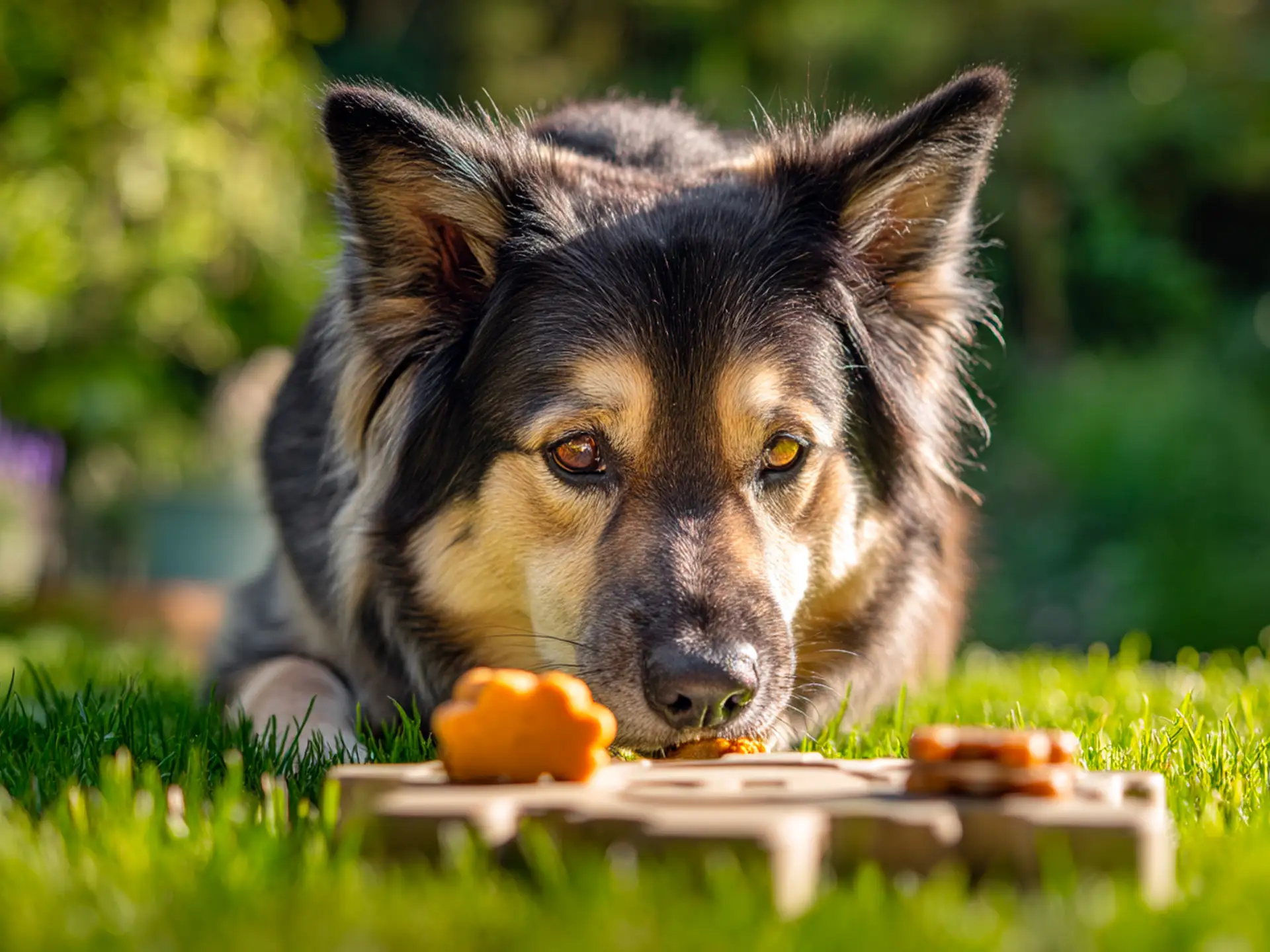
Exercises that challenge your dog in safe, controlled ways are one of the most effective tools for building confidence. They combine mental stimulation, physical movement, and positive reinforcement to help dogs learn that new experiences can be fun instead of scary.
Here are several proven exercises you can start with today:
1. Nose Work and Scent Games
Nose work turns your dog’s incredible sense of smell into a confidence-building game. Hide treats in boxes, around the room, or under plastic cups, and let your dog find them. Start easy, then increase the difficulty over time. Every success boosts your dog’s sense of accomplishment.
2. Target Training
Teach your dog to touch their nose or paw to a specific target, such as your hand or a stick. This simple game encourages focus, decision-making, and interaction with their environment. It also becomes a useful skill in real-life situations, such as guiding them past something unfamiliar.
3. Obstacle Courses
Set up a mini agility course in your yard or living room using household items like broomsticks, cushions, or low platforms. Have your dog step over poles, weave through cones, or walk across a low board. Conquering physical challenges builds confidence while improving coordination and balance.
4. The Run-Away Game
For dogs who get nervous in new situations, teach a cue like “let’s go” or “run away” followed by running in the opposite direction together. Turning a stressful moment into a fun retreat game helps your dog feel safe while staying engaged with you.
5. Sit and Stay in New Places
Once your dog knows sit and stay at home, practice these commands in different locations. Start in quiet areas, then gradually move to slightly busier spots. Familiar skills in unfamiliar places help your dog stay calm and focused, even when surrounded by new sights and sounds.
6. Confidence with New Surfaces
Place mats, towels, or small boards on the floor for your dog to walk across. Introduce surfaces like grass, gravel, or sand outside. Conquering different textures under their paws reduces hesitation in unfamiliar environments.
7. Parallel Walks with Other Dogs
If your dog is shy around other dogs, arrange a walk where both dogs stay at a comfortable distance and move in the same direction without interacting at first. As they relax, you can gradually decrease the distance. This builds confidence without the pressure of direct face-to-face greetings.
Each exercise should be short, positive, and rewarding. Always end on a success so your dog feels good about trying again next time. Over time, these activities create a confident, curious dog who can handle new challenges calmly and happily.
Building Confidence at Home, on Walks, and with Strangers
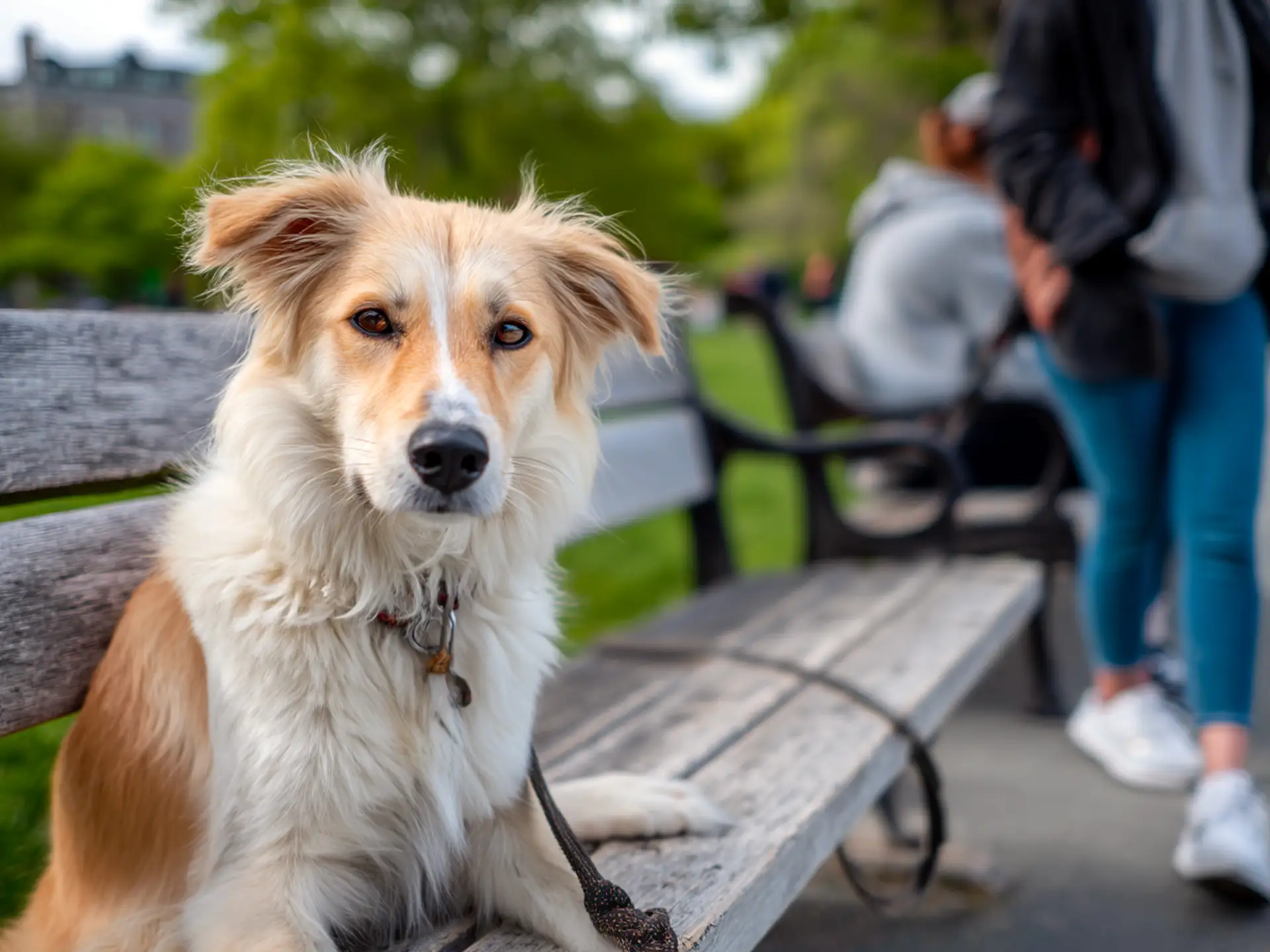
Confidence training works best when it becomes part of your dog’s everyday life. By practicing in familiar places, gradually adding new environments, and introducing strangers carefully, you help your dog stay relaxed no matter what the day brings.
Building Confidence at Home
Home is the safest place to start because your dog already feels secure there. Use it as the training ground for all early confidence-building activities:
- Introduce small challenges like walking across a new surface or investigating a harmless object.
- Practice obedience cues in different rooms so your dog gets used to change in a low-pressure setting.
- Rearrange furniture occasionally to encourage exploration.
- Play scent games and puzzle toys that require problem-solving skills.
Every success inside the home teaches your dog that trying new things leads to rewards, not fear.
Building Confidence on Walks
Walks provide endless opportunities for confidence-building. Start with quiet, low-distraction routes before moving to busier areas. Some practical tips include:
- Pause at safe distances to let your dog watch new sights or hear unfamiliar sounds without feeling pressured to approach.
- Use familiar commands like sit or watch me when passing mildly stressful situations to keep your dog focused and calm.
- Reward curiosity — if your dog calmly investigates a new object like a trash can or stroller, praise and treat them immediately.
- Introduce minor obstacles like stepping over logs or walking across a small bridge to add variety and fun.
The goal is to help your dog view walks as exciting adventures rather than stressful experiences.
Building Confidence with Strangers
Many shy or nervous dogs struggle with meeting new people. To prevent fear from turning into reactivity, follow these steps:
- Let your dog approach at their own pace rather than forcing interaction.
- Ask strangers to avoid direct eye contact, crouch down if possible, and offer treats without leaning over the dog.
- Reward calm behavior whether or not your dog chooses to engage.
- Keep interactions short and positive to prevent overwhelm.
Over time, your dog will learn that strangers bring good things and there’s nothing to fear.
Building Confidence in Puppies
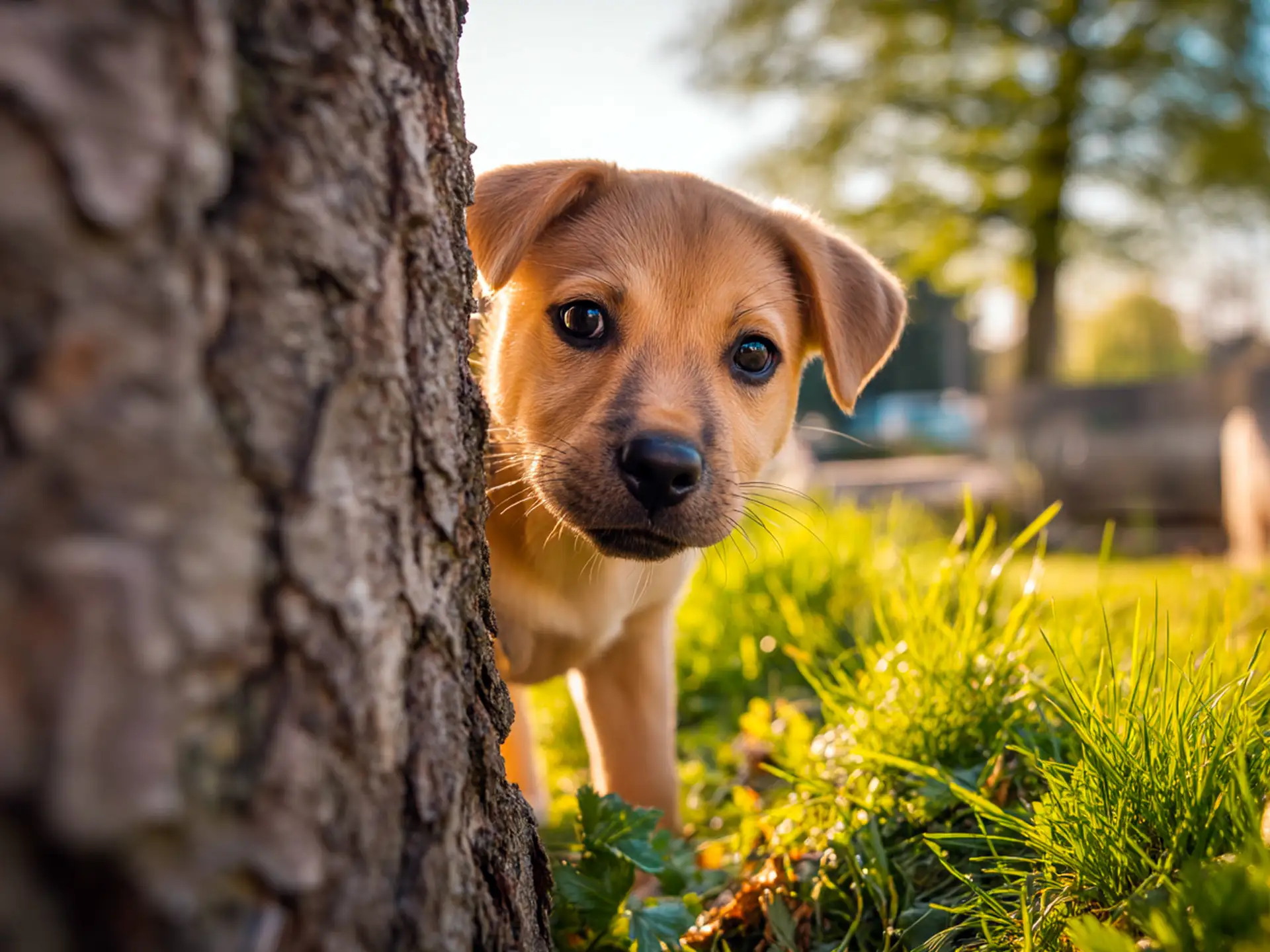
Puppyhood is the most important stage for shaping a dog’s confidence. Experiences during the first few months of life often determine whether a dog grows up to be bold and curious or shy and cautious. By focusing on positive, gradual exposure early on, you can help your puppy see the world as a safe and exciting place.
Use the Socialization Window Wisely
Puppies have a critical socialization period between three and fourteen weeks of age. During this time, they form opinions about everything they encounter — people, animals, sounds, surfaces, and environments. Take advantage of this window by introducing your puppy to as many safe, positive experiences as possible.
Bring them on short car rides, let them walk on different surfaces like grass or sand, and expose them to everyday noises like the vacuum cleaner at a low volume. Keep each experience calm and rewarding so they associate new things with good feelings rather than fear.
Pair New Experiences with Rewards
Confidence grows when puppies learn that new or strange things lead to treats, play, or praise. Whenever your puppy explores something unfamiliar — whether it’s a person wearing a hat or a plastic bag fluttering in the wind — offer a small reward for staying calm and curious.
This creates a habit of approaching the unknown with excitement instead of hesitation.
Keep Sessions Short and Positive
Puppies have short attention spans, so training and exposure sessions should be brief and fun. A few minutes several times a day works better than one long session. Stop before your puppy becomes tired or overwhelmed so they always finish on a positive note.
Teach Basic Commands Early
Simple commands like sit, stay, and come give puppies a sense of structure and help them feel secure in new environments. Familiar cues act as anchors when they face unfamiliar situations later in life.
Avoid Forcing or Overwhelming
Never push a puppy toward something they fear. For example, if they hesitate to approach a stranger, let them watch from a distance first. Give them time to choose when to move closer. Confidence builds when puppies feel safe enough to explore at their own pace.
With the right approach, even a naturally timid puppy can grow into a confident, well-adjusted adult dog.
FAQs About Building Confidence in Dogs
What dog breeds are naturally confident?
Breeds like Labrador Retrievers, Golden Retrievers, and Boxers often show outgoing, social personalities. However, confidence depends more on training and experiences than breed alone. Even naturally shy breeds can grow braver with proper socialization and positive reinforcement.
Can dog sports help build a timid dog’s confidence?
Yes. Sports like agility, rally obedience, and nose work offer structured challenges that encourage problem-solving and independence. As dogs master obstacles or scent trails, they gain courage, focus, and self-assurance, often becoming more relaxed in everyday life.
How can I help a rescue dog with past trauma gain confidence?
Start slowly with a predictable routine, gentle socialization, and positive reinforcement. Let the dog set the pace when meeting strangers or facing new environments. Consulting a certified behaviorist helps if fear or anxiety remains intense despite consistent training efforts.
What mistakes make a shy dog’s behavior worse?
Common mistakes include forcing interactions, introducing too many new experiences too quickly, using punishment when the dog shows fear, or skipping early training steps. These can overwhelm the dog and reinforce anxiety rather than building trust and confidence gradually.
How long does it take to build a dog’s confidence?
Progress varies widely. Some dogs improve within weeks, while others need several months of consistent training. The key is steady, patient exposure to new experiences at the dog’s comfort level, celebrating small wins to create lasting positive associations over time.
Pitfalls to Avoid When Building a Dog’s Confidence
When working with a shy or insecure dog, some well-meaning mistakes can slow progress or even make things worse. Watch out for these common errors:
- Moving too quickly: Flooding a dog with new experiences before they’re ready can increase anxiety instead of reducing it.
- Forcing interactions: Dragging a dog toward strangers, busy areas, or other dogs often backfires, making them feel trapped.
- Punishing fearful behavior: Scolding a dog for barking or hiding when scared teaches them that fear leads to more negativity.
- Inconsistent training: Progress depends on small, repeated successes. Skipping sessions or changing rules confuses the dog and undermines trust.
- Ignoring stress signals: Signs like yawning, lip licking, or turning away show the dog needs space. Pushing further can damage confidence.
Avoiding these pitfalls ensures training remains positive and sets the stage for steady, lasting improvement.
Final Thoughts on Building Confidence in Dogs
Confidence transforms a dog’s life. A once-timid pup can learn to explore the world with curiosity, handle new experiences calmly, and trust both you and themselves. The process takes time, patience, and plenty of small victories, but the payoff is worth it — a happier, more relaxed, and well-adjusted companion.
By following the steps in this guide, adding confidence-building exercises, and avoiding common mistakes, you’ll give your dog the tools they need to thrive at home, on walks, and with strangers. Over time, those small wins become big changes, and your dog will thank you with every wag of their tail.

